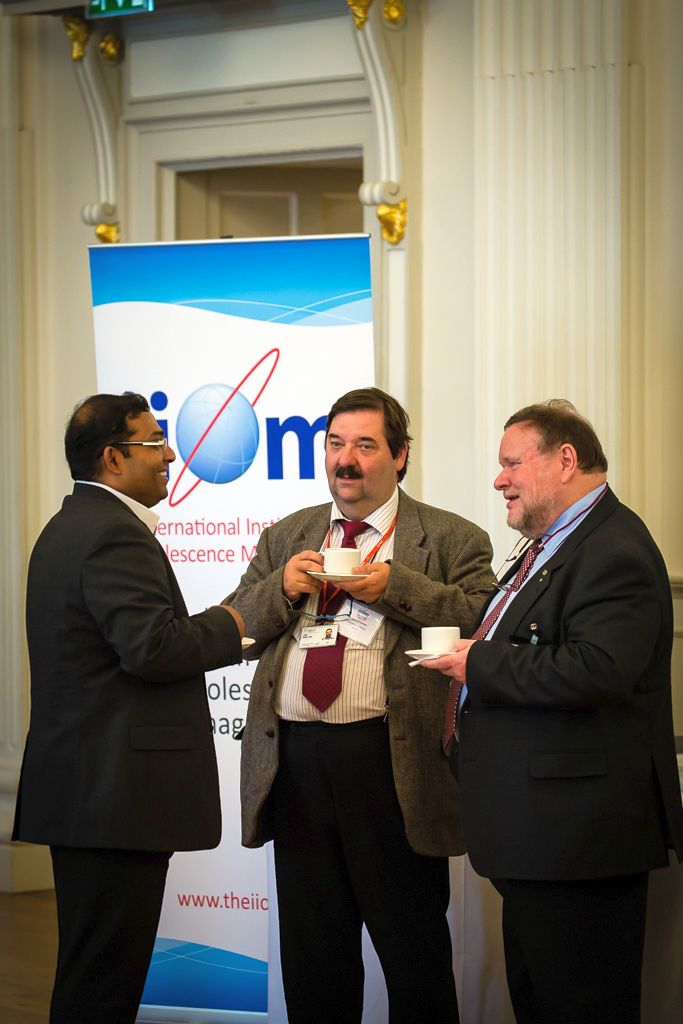Gone, but not forgotten!
Without careful obsolescence planning, not only could you be unable to manufacture or support your products, but threaten your customer’s business and ability to support equipment and platforms too. Mike Richardson discovers how companies and associations are working together to mitigate the issues.
Whether a key component is deemed unsuitable for current demands, or more likely, is no longer available from the original manufacturer, the threat of obsolescence is never far away.
Without effective obsolescence management (OM) practices any confidence in meeting an important customer delivery deadline can soon be punctured if a supplier announces that they’re no longer making that item and there is insufficient time to resolve the problem.

The Component Obsolescence Group (COG) originally promoted the science of OM mainly in respect of electronic components in the A&D sector. In 2012, two members of the current board of the International Institute of Obsolescence Management (IIOM) realised there was no recognition for the role of OM and started to form the idea for an International Institute.
In 2014, the COG Directorate was approached with a view to the formation of IIOM. It was also recognised that obsolescence was far beyond electronic components and must include all requirements to develop, manufacture and support a product throughout the product lifecycle. In 2015 IIOM became a legal entity.
Are you experienced?
IIOM is aimed at generating global awareness and OM, promoting best practice and competence and most interestingly, providing a career development path and recognised qualifications for OM practitioners. IIOM is up and running, but does anyone really take the threat of obsolescence seriously and is there a real appetite for OM?


“Traditionally, OM has been practised in the A&D sectors where long-term and extended platform life is experienced. The automotive sector has also been a long-term practitioner and TLS recently gained experience in the subsea oil & gas and the nuclear power industries.
“Previous OM activity has concentrated on electronic and electromechanical parts, but companies are looking to expand into other part types from simple fixings through to complex mechanical items, including chemicals, compounds, COTS items and software.
“In terms of geographical regions, OM practices are found mainly in more advanced technological countries, but as exports - especially for military equipment - has grown, we see many newer geographical regions expressing an interest.
“The most significant factor in providing obsolescence capability is developing and understanding good OM contracts. From our knowledge, we know there’s significant risk to many overseas platforms and equipment in operation. Although recognised, the greatest difficulty is funding the resolutions and mitigations. IEC 62402-2007 is an international guide to OM and there’s clear evidence of worldwide growth of its adoption in overseas defence departments. Being able to provide a future cost prediction for OM is one of the fundamental capabilities essential to effective OM.”
Who’s accountable?
I’m interested to know whether OM is a discipline in itself or part of asset management, project management, supply chain management or Integrated Logistics Support (ILS)?
“OM is a core requirement at the point of design and pre-production,” states Aerospace Logistics’ Steve Holt. “Too many companies ‘design in’ obsolescence by choice or mistake. Before the procurement department turns the MRP switch, they should invest and test the market longevity before a mistake becomes a disaster.”

“There’s interest from asset management companies and large project management companies; they’re becoming more aware of OM and what needs taking account of. There’s a huge awareness issue in that the resource of obsolescence experts will probably be employed somewhere in engineering or the ILS department and not necessarily a clearly defined business area.”
Anslow agrees: “OM is a separate discipline because it not only requires an engineering background, but commercial and supply chain experience too. This is why effective obsolescence managers tend to be mature with experience in many disciplines. The IIOM’s continuing professional development (CPD) system due out next year will pull this all together into one discipline that engineers of all ages can follow as a unique discipline.”
According to Williams, whilst it normally resides either within engineering or ILS, the discipline and practice of OM is in its own right, a separate function.
“The knowledge required must support all of the stages of a product lifecycle, from conceptual through to recycling. It requires a strong engineering background and if the practitioner has to be part of recommending resolutions and mitigations, then an understanding of parts and their characteristics is essential in providing an effective service.
“Experienced obsolescence managers are rare and difficult to recruit, due to a high demand, but limited supply. Strong financial understanding is also required, as a proactive OM capability will need support and funding from existing budgets intended to resolve risks in the future. This realisation along with other factors, drove the initial programme to develop the IIOM.”
It’s a scary thought, but should anyone ever consider purchasing obsolete components in order to overcome a short-term problem when the long-term consequences could be catastrophic?
“Options to purchase obsolete materials requires a level of understanding and engineering expertise before you buy further issues,” warns Holt. “Materials have a finite life and require the correct storage and handling to ensure the end product lifecycle. A review and test of incoming purchases require the same inspection criteria as when manufactured new.”
Anslow says that many inexperienced project managers will consider a last-time buy (LTB) to be the only solution for obsolescence, where in fact it introduces additional complications like long-term storage.
“However, the purchase of OEM components that can take you to the next system redesign or out of service date, is wholly appropriate, as long as you’ve calculated the number of components required and the redesign or end event actually happens. The cost of additional components compared to the risk of not being able to repair a system comes down heavily on buying-in more components than is needed for manufacture to last through the support period. OM is a complex subject with factors that constantly change.”
Williams says that at the core of obsolescence management is the need to implement a robust and capable risk management system.
“This practice will provide the recommendation and solution to being able to manage obsolescence effectively and minimise cost and waste. The general approach to buying, at all costs, parts to resolve a problem without understanding and undertaking a full risk assessment is not a practice to be encouraged and neither should it be recommended.”
Brexit stage left
Whilst everyone and his wife is still wondering how Brexit will affect Britain’s trade with Europe, the same question must surely apply to the role of OM too.
“It’s an interesting question, because many French and English companies are working closely together on contracts,” states Blackman. “There’s already a certain momentum, but it could be a bit tougher when renegotiations take place. It may be that the UK will have its own standards and opt out of certain laws that the rest of Europe will have to abide by. We may no longer have a level playing field in this respect. The weakening Pound has meant that for some companies, it’s better to put more work into the UK. Many large UK and French companies have worked well together in the past, but it will become more difficult if we’re no longer seen as political partners.”
Adds Anslow: “It seems unlikely that the current ongoing international cooperation on standards and improving the discipline which takes place across the globe will be affected by Brexit negotiations. Naturally, material prices may vary, but then they always do.”
Williams believes Brexit will have little impact in terms of managing obsolescence as a capability and sees no threat to the continued activity of changing IEC 62402 from a guide to a standard.
“Longer term, the Brexit decision will increase manufacturing in the UK, both in terms of volume and wider areas of manufacturing than that currently being practised. Relationships with Commonwealth and other countries having significant access to minerals will need to improve to grow raw materials supply chains. I don’t see current overseas suppliers to the UK wanting to lose our business, and if the EU starts imposing tariffs, whilst this may have an early impact such overseas suppliers, will start to exert commercial pressures to reduce them.
“The UK sites of a European company may experience some business functionality issues if the EU want to add tariffs to equipment, parts and services that may operate across both groups. Again, whilst there may be a short-term impact, I would expect commercial business activity will resolve this, irrespective of politically induced tariffs.”
Building the community
The IIOM’s forthcoming conference, held in Bristol on 20-22 June 2017 will once again bring together the industry’s experts from around the world to discuss and learn about the latest movements in many areas of obsolescence management. According to Anslow, it’s a time to renew old acquaintances and make new friends so useful to solving multi-company issues.
“Attendees will gain from listening to and discussing case studies with presenters and understand how they can meet some of the challenges they face, meet key industry suppliers, see parts and equipment, meet and exchange knowledge with other practitioners and discover how other sectors other than the one they are in manage obsolescence,” he states.
Blackman concludes that there is healthy international interest for the event, partly because of IIOM’s CPD programme.
“The UK and Germany membership of 240 companies has been reasonably stable, but there will be individuals in companies that aren’t supporting OM who will want to undertake CPD and gain qualifications. Once IIOM starts to demonstrate benefits and different membership options are available then we would expect to see membership rise.
“There is significant interest regarding various overseas Chapters and we’re on course in developing CPD for delivery by April 2017. The growth of IIOM’s Chapters will make all the difference. There’s healthy interest in obtaining a professional OM qualification that is transportable because it benefits both the individual and the company.”












